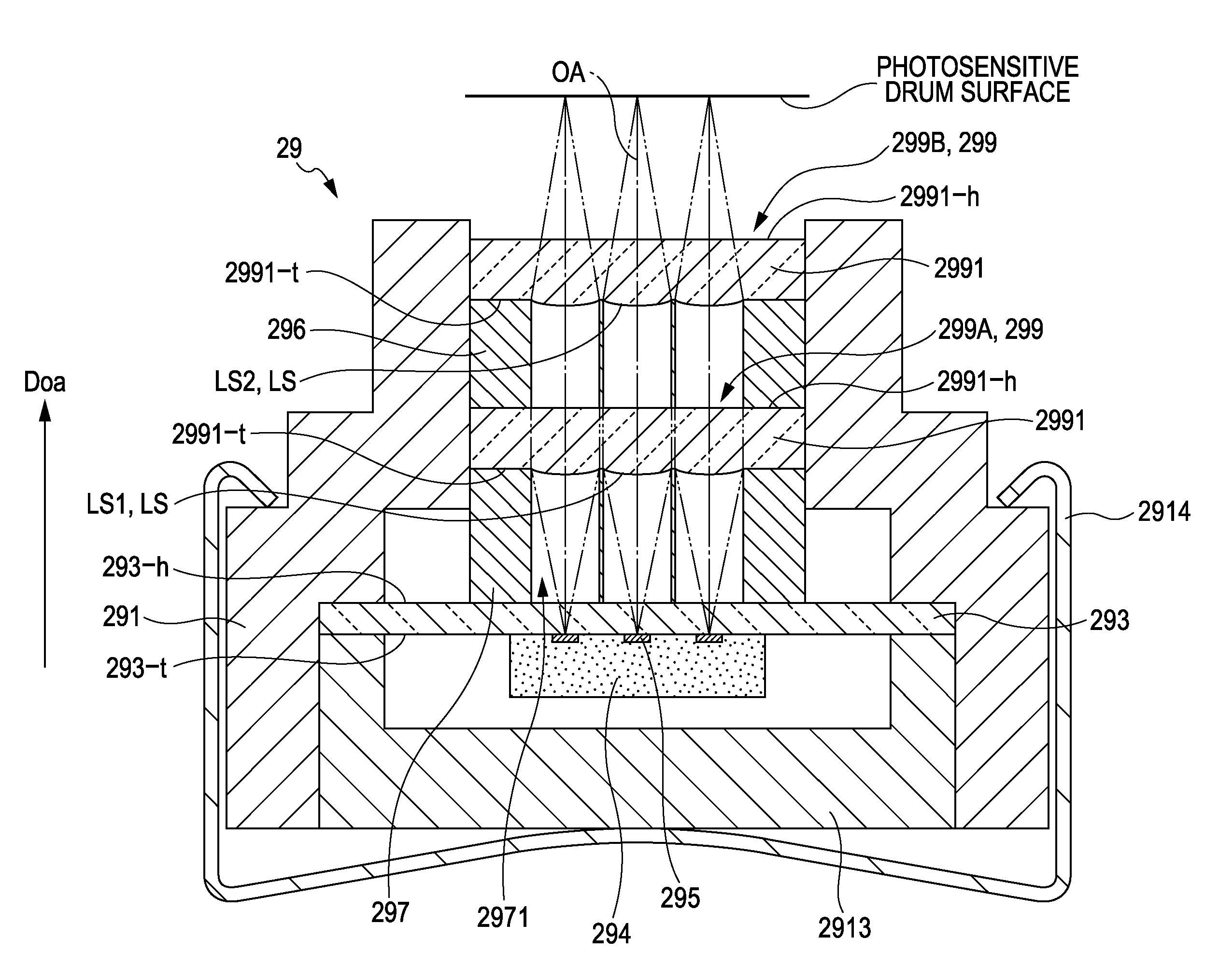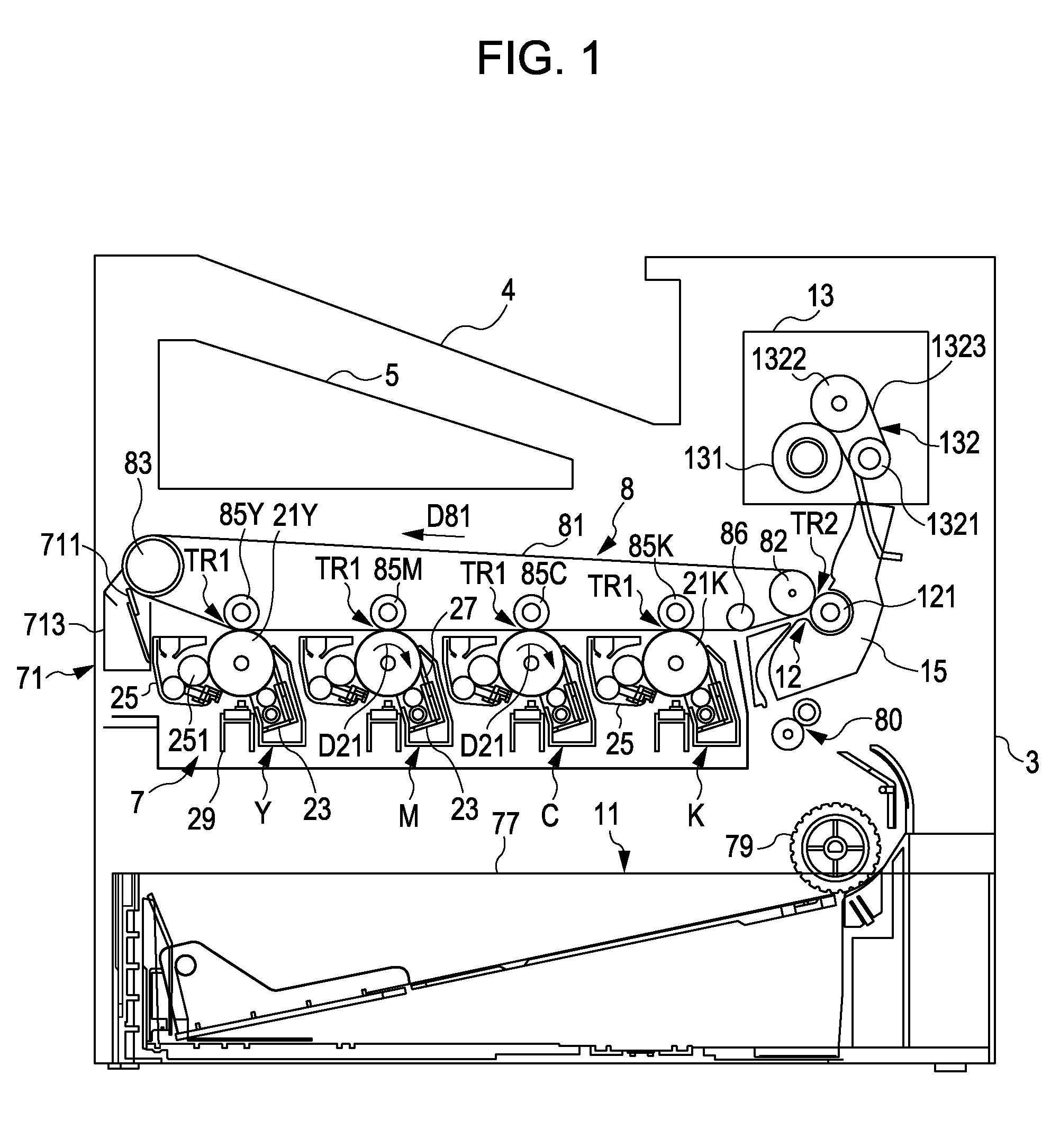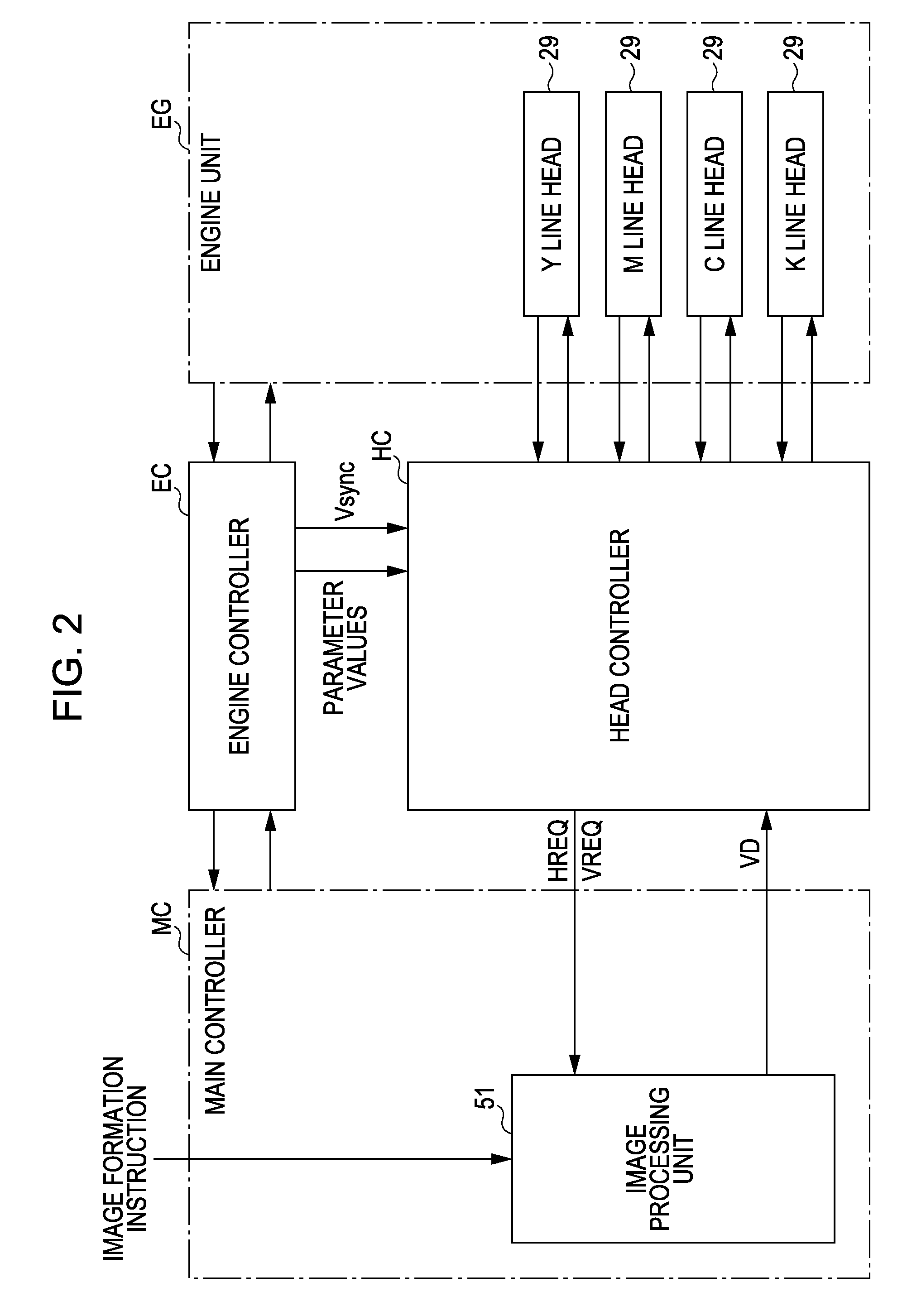Exposure head, exposure head control method, and image forming apparatus
- Summary
- Abstract
- Description
- Claims
- Application Information
AI Technical Summary
Benefits of technology
Problems solved by technology
Method used
Image
Examples
Embodiment Construction
[0031]FIG. 1 is a schematic diagram illustrating an example of an image forming apparatus provided with a line head according to an embodiment of the invention. FIG. 2 is a block diagram illustrating the electrical configuration of the image forming apparatus illustrated in FIG. 1. This apparatus is an image forming apparatus capable of selectively executing a color mode, in which a color image is formed by superimposing four colors of toner, or black (K), cyan (C), magenta (M), and yellow (Y), or a monochromatic mode, in which a monochromatic image is formed using only black (K) toner. Note that FIG. 1 is a diagram illustrating the execution of the color mode.
[0032]As shown in FIG. 2, with this image forming apparatus, when a main controller MC including a CPU, a memory, and the like is provided with an image formation instruction from an external device such as a host computer, the main controller MC supplies a control signal to an engine controller EC and provides video data VD c...
PUM
 Login to View More
Login to View More Abstract
Description
Claims
Application Information
 Login to View More
Login to View More - R&D
- Intellectual Property
- Life Sciences
- Materials
- Tech Scout
- Unparalleled Data Quality
- Higher Quality Content
- 60% Fewer Hallucinations
Browse by: Latest US Patents, China's latest patents, Technical Efficacy Thesaurus, Application Domain, Technology Topic, Popular Technical Reports.
© 2025 PatSnap. All rights reserved.Legal|Privacy policy|Modern Slavery Act Transparency Statement|Sitemap|About US| Contact US: help@patsnap.com



